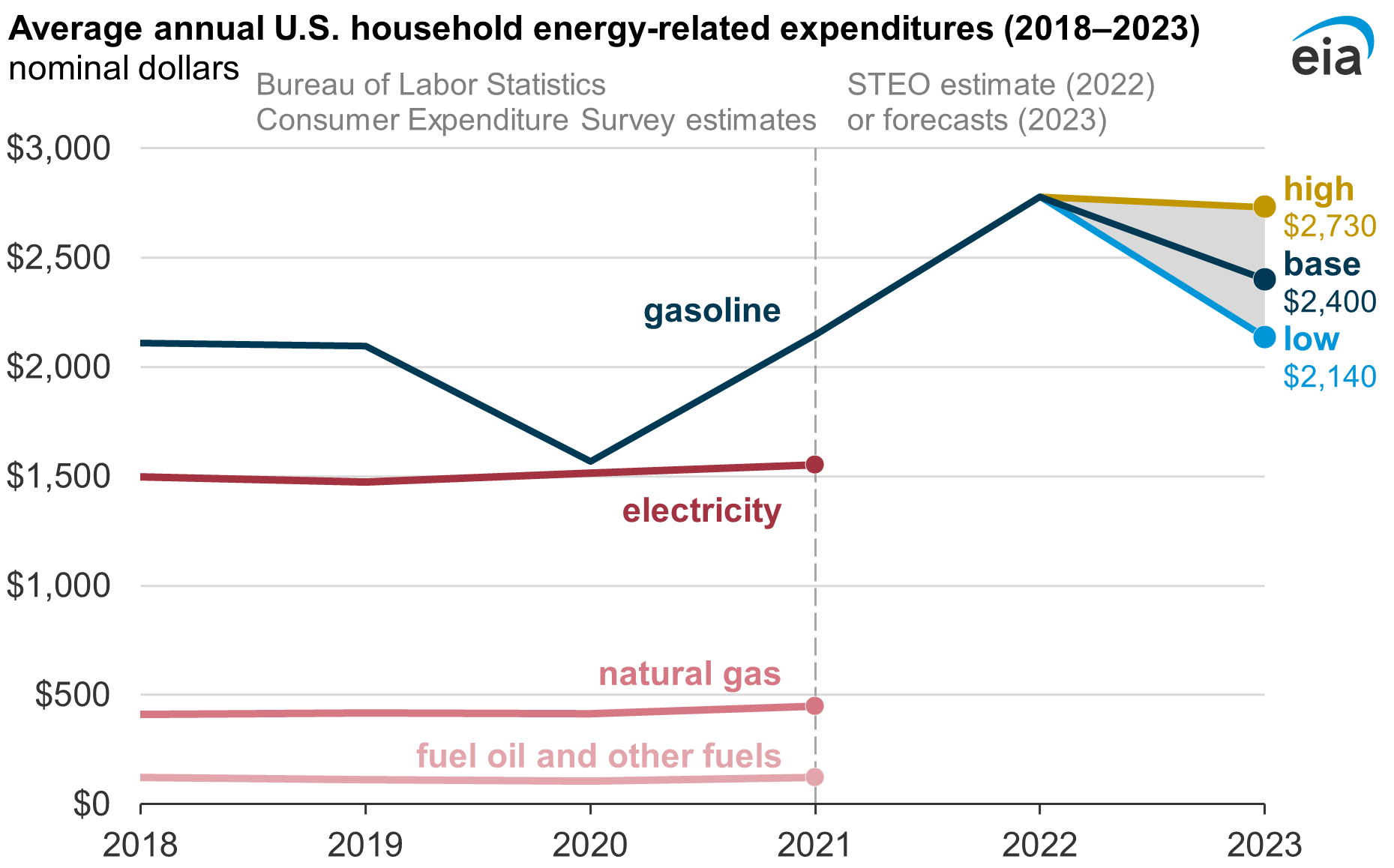At Burj Malabar Auto Maintenance, we believe that understanding global fuel cost trends is valuable for drivers everywhere, including here in Sharjah. One major global reference point is the United States – a country known for its car-centric lifestyle and substantial fuel consumption. Over the past few years, Americans have faced fluctuating gasoline prices amid global events like the pandemic recovery and geopolitical conflicts, leading many to wonder: How much does the average American actually spend on gas? In this article, we’ll explore the numbers behind U.S. gas expenses, the factors that influence those costs, and how American fuel spending compares to other countries. By examining these global trends, we aim to provide insight that can help all of us – both in the U.S. and in the UAE – make informed decisions about our vehicles and fuel use.
Average American Fuel Spending: By the Numbers
The typical American driver’s gasoline expenditure is significant, amounting to roughly $150–$200 per month, which adds up to about $1,500–$2,000 per year on average. In fact, recent data show the average American spends around $166 per month on gas, or about $1,992 a year. This represents roughly 2.5–3% of an average household’s monthly income devoted just to filling the tank. To put that in perspective, gasoline is one of the bigger line items in many American budgets – almost 16% of the typical household’s transportation expenses.
Why do Americans end up spending so much on fuel? One key reason is that they drive a lot. The average American covers about 14,263 miles (22,956 km) per year – roughly 1,189 miles each month. With that much distance traveled, fuel costs accumulate quickly. Even though U.S. gas prices are moderate by global standards (around $3.60 per gallon lately), the sheer mileage means the annual bill can be hefty. For instance, at recent average prices, a year’s driving for an American can easily approach two thousand dollars in gasoline.
It’s also important to note how recent trends have influenced these numbers. In 2022, gasoline prices spiked in the U.S. (averaging around $4 per gallon during the year’s peak) due to global oil disruptions. As a result, the average household’s gas spending surged to roughly $2,780 for the year, a noticeable strain on family finances. Fortunately, by 2023 and 2024 gas prices eased off their highs. Americans got some relief as fuel expenditures dropped by over 12% in 2023 and continued downward in 2024. By 2024, the average U.S. household’s gasoline spending was about $2,148 for the year (around $179 per month) – a welcome decrease from the prior year’s peak. In short, while the average American driver currently spends roughly $166–$179 per month on gas depending on oil market conditions, that figure isn’t static. It can climb or fall with global oil prices, economic changes, and driving behavior shifts. As auto service providers, we keep a close eye on these trends, because fuel costs directly impact how customers use and maintain their vehicles.
Factors Influencing U.S. Gas Expenses
Not all Americans spend the same amount on gasoline. In fact, fuel expenses vary widely based on several key factors. As a company, we often remind our customers that how much you pay at the pump can depend on where you live and how you drive. Here are some of the main factors that influence gas spending in the U.S.:
- State or Region: Gasoline prices differ from state to state due to taxes, fuel supply logistics, and local policies. Some states have higher fuel taxes and thus higher pump prices than others. For example, California drivers pay some of the highest prices in the country – around $4.90 per gallon as of mid-2023, thanks in part to state taxes. By contrast, states like Mississippi enjoy gas prices under $3.00 per gallon. Where you live also influences how far you drive: Americans in sprawling rural states tend to log more miles out of necessity, whereas those in dense cities or transit-friendly areas drive less. This leads to regional differences in total fuel consumption.
- Driving Habits & Lifestyle: The amount of driving – daily commute distance, frequency of trips, and overall lifestyle – greatly affects fuel use. An American with a long suburban commute who drives 40+ miles a day will burn far more fuel than someone who lives in a walkable city and drives only on weekends. Public transportation availability also matters: in places where mass transit is accessible, people can rely less on cars, reducing their monthly gas bills. Lifestyle factors like vacation road trips or driving kids to school also add up. In the U.S., many households have routines that are heavily car-dependent, which pushes their gas spending toward the higher end of the $150–$200/month range.
- Vehicle Type & Fuel Efficiency: What you drive is as important as how you drive. Large pickup trucks or SUVs with big engines consume a lot more fuel per mile than a compact car or hybrid. The most gas-thirsty vehicles (think of a heavy-duty pickup like a Dodge Ram 2500 or a Ford F-150) cost significantly more to keep fueled, whereas fuel-efficient models like a Honda Civic or Toyota Corolla can make a tank of gas last much longer. Additionally, vehicles that require premium gasoline or diesel can increase costs – diesel, for instance, often costs more per gallon than regular unleaded gasoline. In essence, choosing a fuel-efficient car and keeping it well-maintained (tire pressure, engine tune-ups, etc.) can substantially curb your fuel expenses.
To illustrate how these factors play out, consider a couple of examples. In Wyoming, a rural state with long driving distances, the average resident drives about 2,148 miles per month and spends roughly $305 on gas each month. That works out to over 5% of a typical Wyoming household’s income – one of the highest shares in the nation. Wyoming’s gas price isn’t extremely high (around $3.55/gal, slightly below the U.S. average), but long distances traveled drive up the cost. Now compare this to Washington, D.C., an urban area: the average driver in the capital travels only about 530 miles a month and spends just around $78 per month on gasoline. Many D.C. residents rely on public transport or have short commutes, and while gas prices there are above average, their overall spending stays low. These examples show how driving behavior and location can swing monthly gas bills from under $80 to over $300 across different parts of the U.S.
There’s also the factor of income levels: in lower-income states or households, even a moderate fuel bill can eat up a larger fraction of income. For instance, drivers in Mississippi (a state with relatively low incomes) spend about 5.1% of their monthly income on gas on average, one of the highest percentages in the country, even though Mississippi’s gas prices are among the cheapest. By contrast, in wealthier regions like the Northeast, fuel might only account for ~2% of monthly income because earnings are higher. We see a similar pattern globally – fuel costs are felt most acutely by those with tighter budgets. This is why we advise our customers to consider fuel efficiency and driving needs when choosing a vehicle, as it can make a real difference in long-term costs.
U.S. Gas Spending in Global Perspective
How do American drivers’ fuel expenses stack up against the rest of the world? As it turns out, the U.S. occupies a unique spot in the global picture. Gasoline in the United States is relatively cheap compared to most developed countries – in fact, among the G20 economies, the U.S. has the 6th lowest gas price (about $1.01 per liter, or roughly $3.82 per gallon). For example, fuel in France costs almost $0.96 more per liter than in the U.S. – that’s nearly double the price per liter (France’s prices are around $1.97/L, or over $7.40 per gallon). European countries like the UK, Germany, and Italy impose heavy fuel taxes, resulting in very high pump prices. This means that on a per-gallon basis, Americans pay far less than Europeans for gasoline.
However, Americans tend to drive much more and own less efficient vehicles, which balances out some of that price advantage. Let’s compare annual fuel spending for drivers in a few countries:
| Country | Average Annual Fuel Spending per Driver |
|---|---|
| United States 🇺🇸 | ~$1,992 (approx. per driver) |
| United Kingdom 🇬🇧 | ~$1,437 (per driver on average) |
| Australia 🇦🇺 | ~$950 (per driver on average) |
As shown in the table, the average American driver spends more on gasoline per year than drivers in the UK or Australia. This is interesting because fuel in the UK is far pricier per gallon than in the U.S. How can a British driver spend less overall? The answer lies in usage and efficiency: Brits typically drive shorter distances and often use more efficient cars, partly because fuel has long been expensive in Europe. So despite paying over $7 a gallon at times, a typical UK motorist’s yearly fuel bill is only about $1,437, lower than an American’s. Australians benefit from moderately priced fuel and somewhat shorter driving distances too, averaging around $950 a year in gas spending. In contrast, the American lifestyle of long commutes, road trips, and larger engines bumps the U.S. average up to roughly $1,992 annually.
What about countries where gas is cheaper than in the U.S.? Oil-producing nations, especially in the Gulf region, have historically enjoyed very low fuel prices. Here in the UAE, for instance, gasoline currently costs about 2.9 AED per liter – that’s roughly $0.79 per liter, or just about $3.00 per gallon, significantly cheaper than U.S. prices. This government-regulated pricing means that drivers in the UAE (including Sharjah) spend less per liter of fuel. However, due to shorter daily driving distances on average and a smaller country size, annual fuel spending in the UAE can be relatively modest despite a growing car culture. The same goes for other countries with inexpensive fuel: drivers might pay less at the pump, and often they also drive fewer miles than Americans do. On the other hand, some developing countries have lower car ownership or usage, which also keeps average fuel spending low.
The global trend that emerges is that Americans are among the highest spenders on fuel in absolute terms, even if their gas prices are not the highest. The combination of moderate prices, high usage, and larger vehicles leads to a substantial yearly fuel bill for U.S. drivers. By educating our readers about these global comparisons, we highlight how both fuel prices and driving habits determine what people pay. It’s a reminder that conserving fuel – through efficient driving or choosing economical cars – is a universal concern, whether you’re in Sharjah or San Francisco.
Navigating Fuel Costs and Trends
In conclusion, the average American’s gas expenses amount to a few thousand dollars a year, and this figure is influenced by a variety of factors like location, driving distance, and vehicle efficiency. We at Burj Malabar Auto Maintenance understand that fuel costs are a significant part of vehicle ownership. The U.S. example shows how even with reasonably priced fuel, heavy usage can lead to high annual expenditures. It also shows how quickly things can change – a spike in global oil prices can push the yearly gas bill upward (as seen in 2022), while improved conditions can ease the burden (as in 2024).
Crucially, looking at global trends puts things in perspective. American drivers spend more on gas than many of their international counterparts, not because they pay the most per gallon, but because of how much and how they drive. Meanwhile, countries with the most expensive fuel have adapted with fuel-efficient habits, and countries with cheaper fuel often don’t drive as exorbitantly far as Americans do. For drivers in Sharjah and the broader UAE, understanding these patterns is useful. Our local fuel prices may be lower, but they are not immune to global market shifts – recent years have shown that world events can raise prices at UAE pumps too. By staying informed about how fuel costs evolve in a major market like the U.S., we can better anticipate and manage our own driving expenses.
Ultimately, whether you’re filling up in the United States or the United Arab Emirates, awareness and smart choices are key. Keeping your vehicle well-maintained (for optimal fuel efficiency), planning your trips, and staying mindful of fuel prices can all help in reducing how much you spend on gas. At Burj Malabar, we are committed to helping our customers navigate these aspects of car ownership. Fuel expenses might be a necessity, but with the right knowledge and habits, you can make the most of every gallon – no matter where you’re driving.



